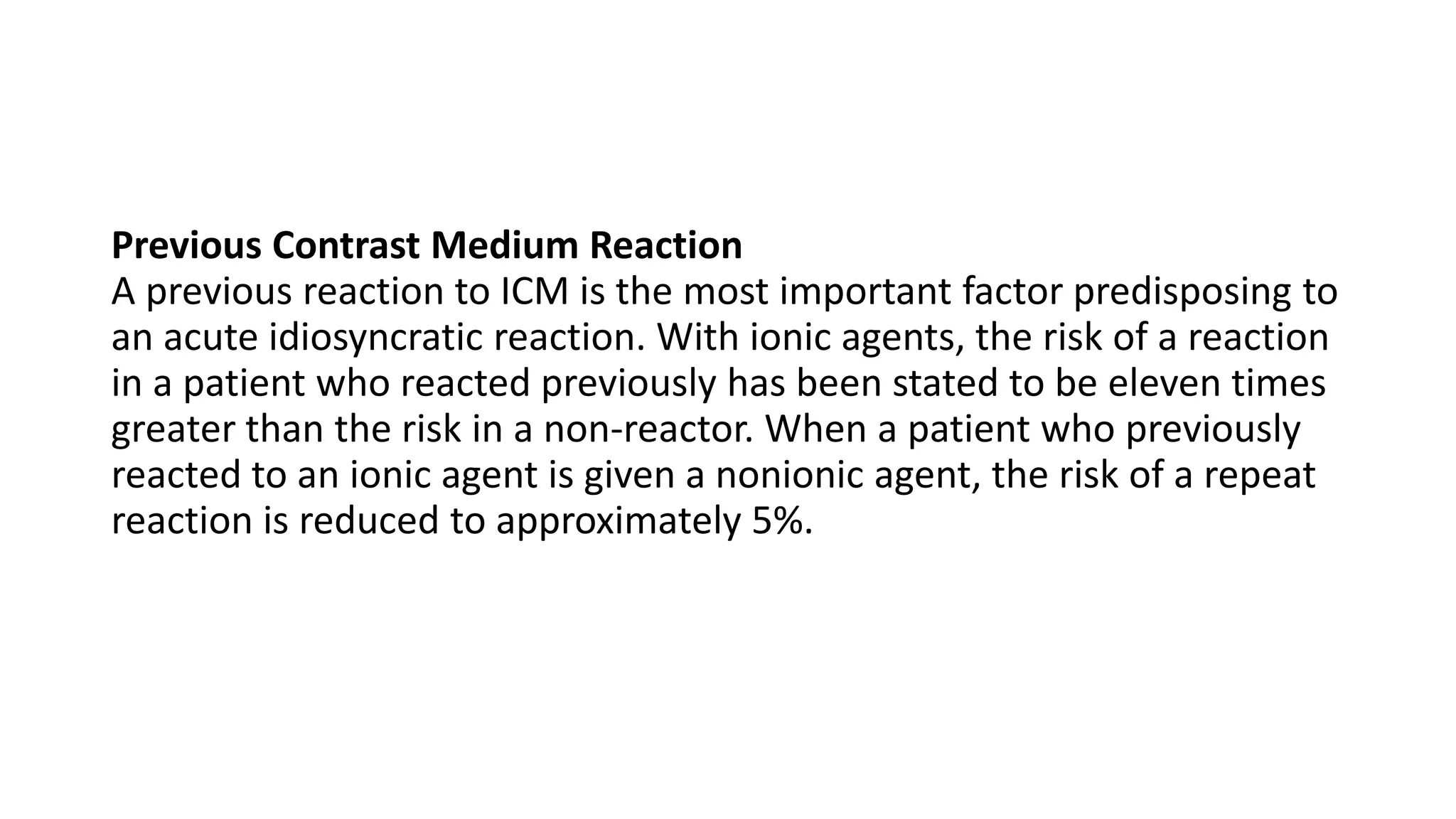The document discusses the safety issues related to radiographic contrast media, detailing their classification into positive and negative agents, and the risk factors associated with iodinated and gadolinium-based contrast media. It highlights acute idiosyncratic reactions, prevention strategies, and the importance of using low osmolality nonionic agents to reduce the incidence of adverse reactions. Additionally, it addresses contrast medium induced nephropathy and nephrogenic systemic fibrosis, emphasizing the need for careful patient selection and management strategies to mitigate risks.


























![Contrast Medium Induced Nephropathy
Acute renal failure is a sudden and rapid deterioration in renal function
which results in the failure of the kidney to excrete nitrogenous waste
products and to maintain fluid and electrolyte homeostasis. It may be a
result of intravascular administration of ICM and MR contrast media.
The term contrast medium induced nephropathy is widely used to refer
to the reduction in renal function induced by contrast media. It implies
impairment in renal function [an increase in serum creatinine by more
than 25% or 44 µmol/l (0.5 mg/dl)] which occurs within 3 days
following the intravascular administration of CM in the absence of an
alternative etiology. CM induced nephropathy ranges in severity from
asymptomatic, nonoliguric transient renal dysfunction to oliguric
severe acute renal failure necessitating dialysis.](https://image.slidesharecdn.com/radiographiccontrastmedia-190324220507/75/Radiographic-contrast-media-27-2048.jpg)

![Predisposing Factors
The patients at highest risk for developing contrast induced acute renal
failure are those with pre-existing renal impairment [> 132 µmol/l (1.5
mg/dl)], particularly when the reduction in renal function is secondary
to diabetic nephropathy. Diabetes mellitus per se without renal
impairment is not a risk factor.
Large doses of CM and multiple injections within 72 h increase the risk
of developing contrast medium induced nephropathy.](https://image.slidesharecdn.com/radiographiccontrastmedia-190324220507/75/Radiographic-contrast-media-29-2048.jpg)

























